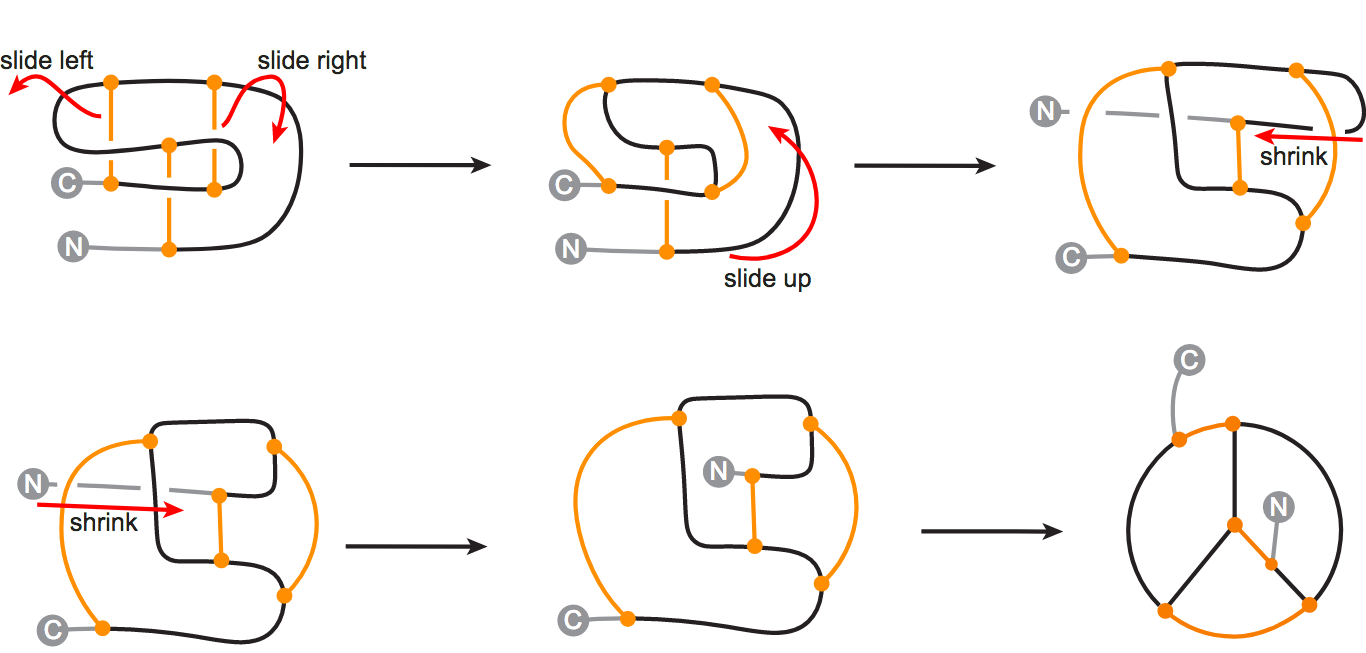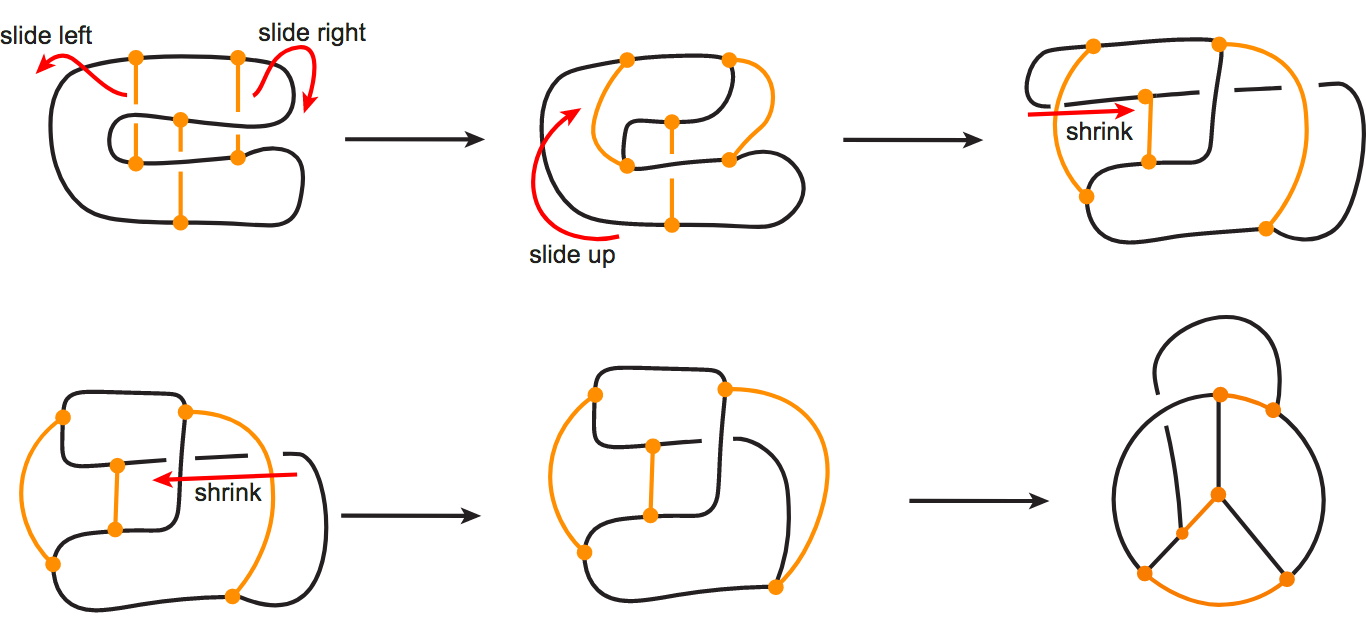Cysteine knots
The so-called cysteine knots are motifs composed of three disulfide bridges. Two of them form a covalent loop, which is pierced by the third one (Fig. 1). There are at least three classes of cysteine knots, differing in bridges arrangement and connection of the termini (Fig. 1).

Fig 1. Three types of cysteine knots in proteins with the scheme of cysteine connection. The loop-forming bridges are marked with orange, the piercing bridge is marked with red. The "N" and "C" letters denote the chain termini. The numbers in the cysteine-symbolizing beads denote the sequential order of the cysteine residues.
The "knot" in the name of the motif is misleading, as in fact the "cysteine knot" does not contain any knot. In particular, each covalent loop (circular path following covalent bonds) is unknotted. This can be seen directly, after continuous deformation of the motif (Fig. 2).

Fig 2. The continuous transformation of growth factor cysteine into simpler form in which all the closed, covalent loops (circular paths) are clearly unknotted. The "N" and "C" letters denote the chain termini.
Moreover, even the connection of the termini does not introduce any knotted, closed loop (circular path), as evidenced in Fig 3. This reasoning can be also made mathematically precise by treating the motif as a spatial graph, which in such case does not feature any knotted cycle (is not intrinsically knotted/linked).

Fig 3. The continuous transformation of the cyclic cysteine knot to the form in which all the closed loops (circular paths) are clearly unknotted. Note, that in this case the chain is closed.
Nevertheless, as the "cysteine knots" are topologically complex motifs, which become world-widely known, the KnotProt database includes the self-updating list of cysteine knots. Two lists are available: the list of all structures classified as cysteine knots and the list of non-redundant representants. The lists may be found in the top of the "Search" tab, as well as in the “Read more” section.
The list of cysteine knots includes the PDB code with the chain name, the loop and the piercing bridge. The covalent, pierced loop is determined by the indices if two cysteine bridges. However, it is convenient to list also explicitly the subchains connected by the bridges. The subchains are encoded in KnotProt by specifying the indices, connected by the "-c-" (chain) separator. Similarly, the “-b-“ denotes connection by bridge. Therefore, the covalent loop may be presented e.g. as 4-c-11-b-23-c-21. Such a string denotes the covalent loop formed by the subchains Cys4->Cys11 and Cys21->Cys23, connected by the bridges Cys11-Cys23 and Cys4-Cys21 (with the second bridge being implicit). Consistently, the piercing bridge is described as e.g. 17-b-29, meaning the disulfide bridge between Cys17 and Cys29. Clicking an entry shows the page collecting all the data on the non-trivial knot-like motif in proteins.
Each protein, containing a cysteine knot according to KnotProt has a separate tab with the structural description of the motif. In particular, the tab contains a table row with the loop and the piercing bridge. Clicking the "View details" button shows the loop in the visualization of the structure. The loop-forming arcs are in blue, the loop-forming bridges are in orange, and the loop-piercing bridge is in red (Fig. 4).

Fig 4. The result of the "View details" button on the structure visualization. The loop-forming subchains are in blue, the loop-forming bridges are in orange, the loop piercing bridge is in red.
Clicking the “View details” button also highlights the motif on the sequence, preserving the color code from the structure (Fig. 5)

Fig 5. The result of the "View details" button on the sequence. The sequences of loop-forming subchains are in blue, the loop-forming cysteines are highlighted in yellow and the cysteines forming piercing disulfide bridge is highlighted in red.
Note, that the definition of the cysteine knot contains only the mutual sequential and spatial arrangement of the bridges, but does not impose any condition on the sequential distance between the bridges. Therefore, KnotProt classifies as the cysteine knot any kind of triple of disulfide bonds, independent of the motif size. Nevertheless, in most cases, the pierced, covalent loop is formed by less than 40 residues.





